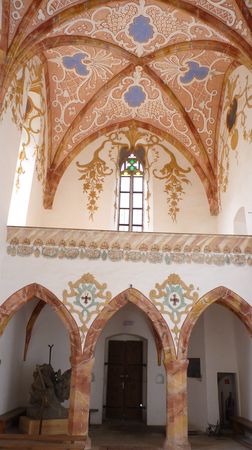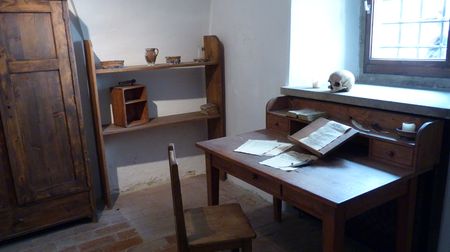THE RED CLOISTER and DUNAJEC RIVER
| ČERVENÝ KLÁŠTOR : THE RED CLOISTER | |
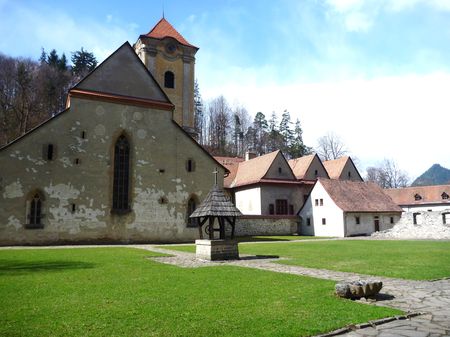 |
The Red Cloister is located in St. Anton Valley near the village of Lechnica. The name Červený Kláštor (the Red Cloister) is due to its red roof. The construction began in 1330. As for its style, the Red Cloister is Baroque inside and Gothic outside. |
A Carthusian monastery from 1330 to 1567 |
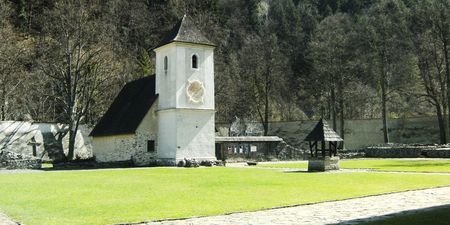 |
| The history of the Red Cloister dates back to the 14th century. Its foundation was accompanied by curious circumstances because it is linked to a violent death, that of Friedrich from Hrhov, who was killed by Master Kokoš. The court of Levoča decided that Kokoš should be sentenced to build six cloisters for the redemption of his soul. He only managed to set up two cloisters - the first one on the rock above Letanovce (the Rock of Refuge) and the second one in the Valley St. Anton near the river Dunajec : The Red Cloister. | |
 |
The monastery was built on a remote site because it was affiliated to the Carthusian monastery of Skala Útočišťa (the Rock of Refuge) and that the Carthusian Order was the strictest religious order with an ascetic way of life. The Carthusian monks lived in the Red Cloister from 1320 to 1567.
|
A Camaldul monastery from 1711 to 1782 |
|
The Camaldul Order brought its community of monks to the Red Cloister in 1711. This very strict eremitic Order was founded in Tuscany (Italy) and was composed of 25 monasteries, 5 of them located in the Hungarian Kingdom, among which Červený Kláštor (the Red Cloister). Camalduls rebuilt the monastery in Baroque style. They also built new monks' cottages and in 1747 they consecrated the church of St. Anthony the Hermit, to which they added a tower in 1750. In 1754 they repaired the entrance wing of the monastery and added a few buildings. |
|
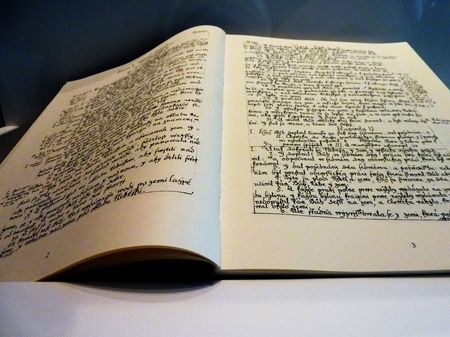 |
|
| In 1754, a special "professorium" - a theological school for the Camaldul monks- was established. It's mainly known for its translation on the bible in Slovak. It's also famous for its pharmacy established in 1756. It was managed by Friar Cyprian from 1756 to 1775. He was an extremely well-educated monk, a pharmacist and a medicine doctor. He is famous for his herbarium and as the head of the pharmacy of the cloister. He was interested in medicine, botany, pharmacy, alchemy, as well as mechanics and cosmology. |
 |
| THE LEGEND OF FRIAR CYPRIAN | A legend tells about how he constructed a machine that made it possible for him to fly. Indeed, as he was collecting herbs in the Pieniny Mountains surrounding the monastery, he felt envious at the sight of a flying eagle. He decided to build a machine which could fly higher than the birds in order to know the mysteries inaccessible to the other mortals. He managed to take off from the top of a nearby hill called the Three Crowns. He flew so high with his magical wings that he was hit by a lightning and was knocked to the ground near the lake Morskie Oko in the Polish Tatras. It is said that a rock - still called the "Monk"- grew at that precise spot. The flying apparatus was burnt by order of the archbishop. |
 |
|
| The Chapter hall was built during the reconstruction of the monastery after 1462. Walls under the vault are covered by fragments of the scene from the life of christ. Originally the whole interior of the chapter hall was painted and each gable field containned one scene from the cycle of Passion. On the southern wall fragments of the "Carrying of the Cross" painting are visible. |
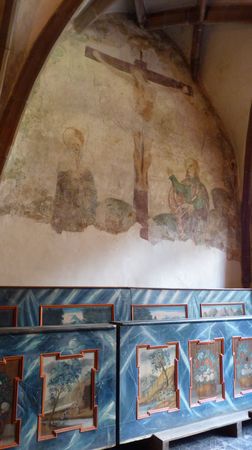 |
|
Carthusians, as well as Camalduls, obeyed strict order rules. Monks lived in the so-called "klazúra" (closure) - a closed part of the monastery, in cells or houses separated by small gardens. This house were of standard size (12 x 9 m) and consisted of a central coridor, for rooms and a small cellar. A modestly furnished dormitoriun was intended for a Hermit's resting, eating and spiritual activities. |
Hermits grew medical herbs and other plants for there own need. Monks also used there spare time for various practical activities such as beekeeping, fishing, growing fruit threes and workind with wood in the forest. They also pursued medecine, astrology and alchemy. An anonymous chronicler from the monastery of Skala Útočišťa (the Rock of Refuge) recorded a story of an alchemist whose experiments "wasted all fortune of brtoher monks, recasted their gold, changed silver into smoke and impoverished the monastery". |
 |
DUNAJEC RIVER |
|
The Dunajec is a river running through southern Poland. It is the right tributary of the Vistula River. It begins in Nowy Targ at the junction of two short mountain rivers, Czarny Dunajec and Biały Dunajec (Black and White Dunajec). The Dunajec forms a border between Poland and Slovakia for 27 kilometres in the Pieniny Środkowe (Slovak: Centrálne Pieniny) range, east of the Czorsztyn reservoir. It is the only river taking waters from the Slovak territory to the Baltic Sea. |
|
 |
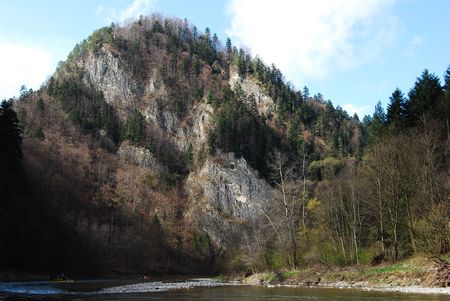 |
The Dunajec is 274 kilometres long, running through southern Poland for 247 kilometres, which makes it Poland's fourteenth longest river. It has a basin area of 6,804 square kilometres (4,852 in Poland, and 1,952 in Slovakia). |
|
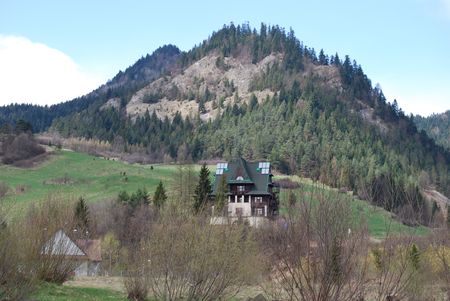 |
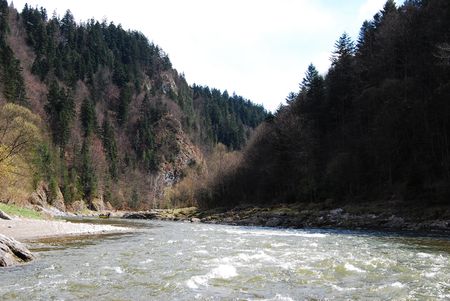 |
On the Slovak/Polish border, it flows through the Zamagurie region, with attractions such as the Dunajec River Gorge, the Trzy Korony (the Three Crowns) massif with a 500 metres precipice. Along the Dunajec we can see two Pieniny castles in Czorsztyn and Niedzica, and the Červený Kláštor. |
|
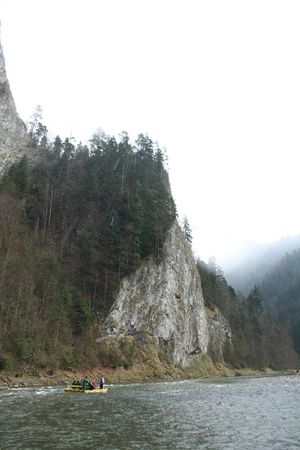 |
 |
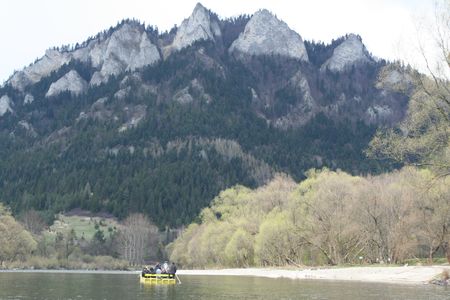 |
|
| There are two versions to this legend. The first one is that seven monks from the Red Cloister went to the forest looking for herbs. They picked one which was forbidden. For this reason, they were punished and petrified. The other version says that they were allowed to go to a neighbouring convent to see nuns for one day but that they stayed there one week and were thus punished and petrified for that. As a result, the seven monks found themselves frozen in the rocks along the course of the River. The only way for them to be freed from the curse and to return to normal is that 11,000 virgins should cross the bridge in front of them. |
|
